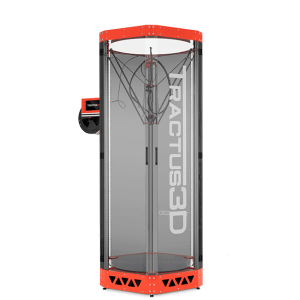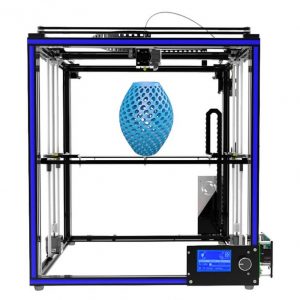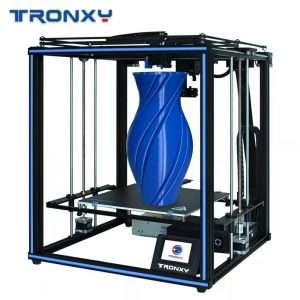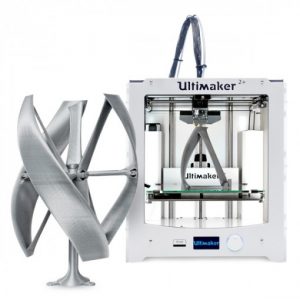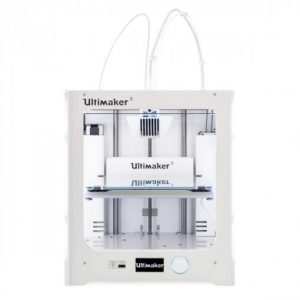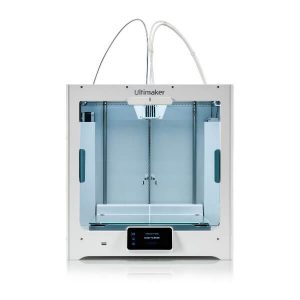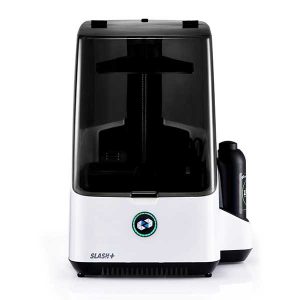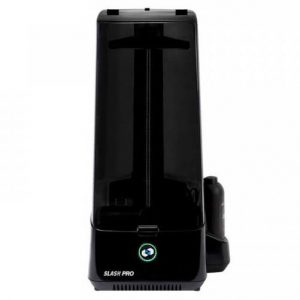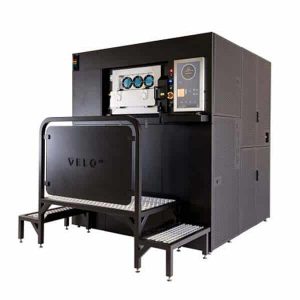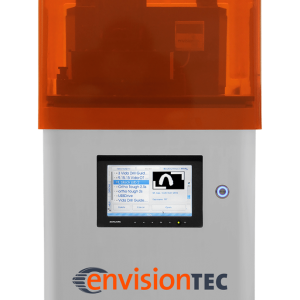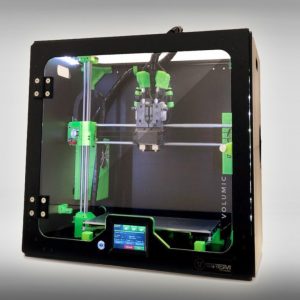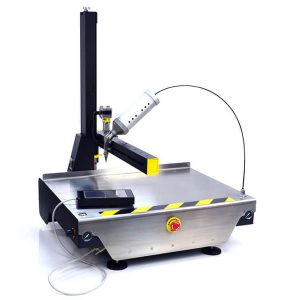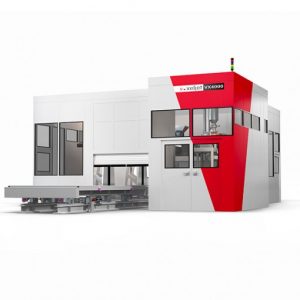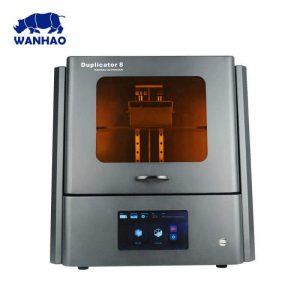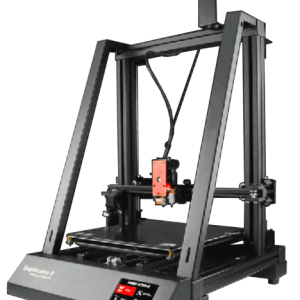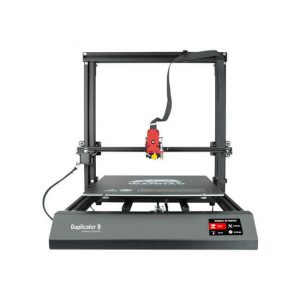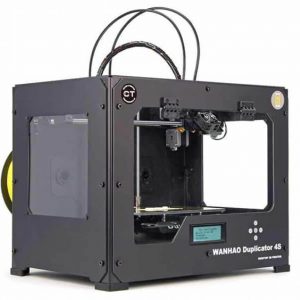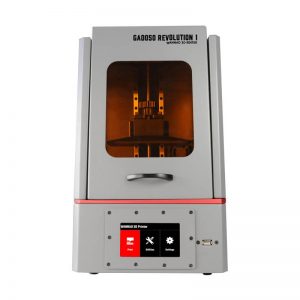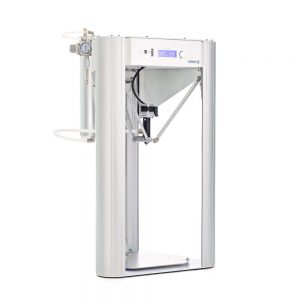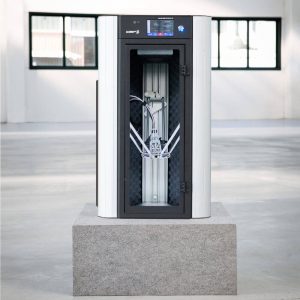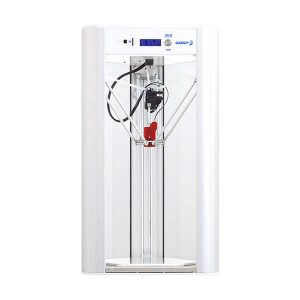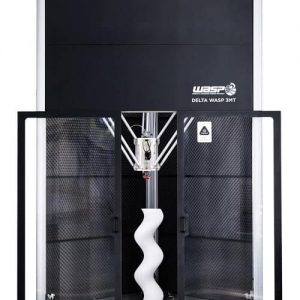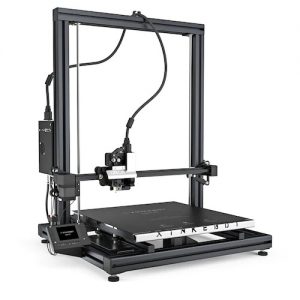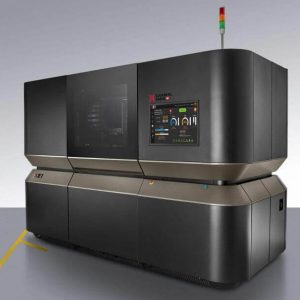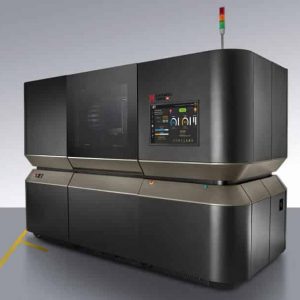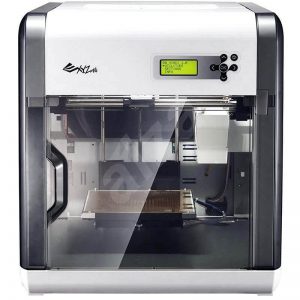3D Printers
Filter
Showing 241–270 of 285 results
PROS:
- Heated build chamber.
- Huge build volume.
- A huge range of layer resolution.
- Printing with multiple 3D printer filaments.
- Touch screen interface in multiple languages.
- Automatic bed leveler.
- Reliable Delta construction.
- Lesser operating sound.
- Stable during the 3D printing process.
- Its print chamber can withstand high temperatures.
CONS:
- The printer offers mode build size in the Z-axis than in X and Y. This makes it suitable only for building certain kinds of parts and functional prototypes.
PROS:
- The price of the printer is very affordable for anyone willing to experiment with technology.
- Large build volume.
- Fast print speed.
CONS:
- The open body design makes you think about the concerns regarding the generation of temperature while the first part of the 3D printing process.
PROS:
- Affordable
- Auto leveling sensor
- Removable print bed
- Support for multiple filaments
- Power Resume feature
- Filament run-out sensor
CONS:
- DIY Kit. Hence, needs assembling
PROS:
- Quickly assembled.
- Considerable build volume.
- Filament runout sensor.
- Resume print function.
CONS:
- The bed-holding binder clips will get in the way of the extruder moving along the plate for measuring the outer rim.
PROS:
- Intelligent leveling.
- High precision printing of parts and functional prototypes.
- No gap feeding.
- Large size built up.
- Temperature control.
- A special platform enabling you easily remove printed objects.
- HD touch screen interface.
CONS:
- Being an open-bodied 3D printer, it is difficult to generate temperature for some of the filaments. Because of this reason, you are not able to print with PLA.
PROS:
- Low noise levels
- Provides high accuracy and resolution
- Allows usage of third-party filament
- Provide Olsson Block kit for users including interchangeable extruders.
- Compatible with a variety of filaments
- Compatible with different OS: Windows, OS X, and Linux.
- Easy to setup and install
CONS:
- Absence of auto-calibration
- Expensive
- Not enclosed, hence, prints are subjected to get affected with change in atmosphere
- Generate odour with ABS printing
- WIFI connectivity not available
Editor choice
PROS:
- It provides dual extruder for multiple color printing
- It exhibits hot-swappable print cores
- Reels equipped with NFC for ease of printing
- WIFI, Ethernet and SD card connectivity
- Remote Access and Monitoring
CONS:
- Open design, hence, unsafe around children
- Expensive
PROS:
- Noise-free cooling
- Dual extruders available
- Supports PVA
- Highly precise results
- Freedom to enhance the design code
- Low maintenance
CONS:
- Expensive
- Printing large designs could be challenging
PROS:
- The 3D printer is very simple to setup
- The exceptional quality of prints possible
- Bigger build volume
- Compatible with multiple materials
- Colorful touchscreen with intuitive control
- Remote access to the print using Cura
CONS:
- Expensive
- Print time may seem slower for smaller print height
PROS:
- Close loop controls for different parts of the printer.
- Automated controlling of surface level as well as other parameters.
- High quality of parts and functional prototypes.
CONS:
- The cost of the printer would be an issue while buying the printer.
PROS:
- The machine has high Print speed.
- Uniz Slash Plus can be very easy at the removal of media
- The printer uses Non-proprietary resin.
CONS:
- The printer has no control screen as a user interface.
- Documentation is something that the printer can improve upon.
- The printer’s accessories are restricted.
PROS:
- UDP Mode can print with abnormal speed without compromising the quality.
- The printer has an option to auto-level itself.
- The printer can print parts and prototypes that have a special application for the shoe industry.
CONS:
- UDP mode does not allow the use of third party resin.
- The cost of the printer is high compared to competitors.
PROS:
- Eccentric design innovation.
- A full-stack solution involving powder handling and inert powder unpacking.
- One-click calibration.
- In-situ metrology sensors for minute control.
- Higher throughput with dual laser sources.
- Lesser risk of part collisions.
- Available in two different configurations.
CONS:
- Sapphire is a very complicated system and it takes time to understand it and gain complete control.
- Printing with Sapphire is a costly affair. It demands huge one time investment and regular high cost maintenance.
PROS:
- This printer provides 10 times faster speed than other DLM machines.
- Despite printing faster, the printer provides high-resolution printing.
- It is based on plug-and-play technology that helps users in easy operation.
- The printer has a user-friendly interface provided with the screen touch system for ease of setting the printing parameters.
- The structure of this printer is compact and can be accommodated in small spaces as well.
- The printer has a reduced need for the support structure.
CONS:
- The printer is expensive and hence not accessible for those with a low budget.
- Post-processing of parts and functional prototypes are required.
PROS:
- Cooling blowers.
- Filament run-out detection.
- Rigid frame.
- Removable ceramic tray.
- Ventilated motors.
CONS:
- Post-processing of the printer is very difficult when compared to the post-processing of other printers in the same price range having an open frame.
PROS:
- High precision stainless steel auger screw and extruder.
- Robust metal and PET cartridge clay delivery system.
- Preinstalled second air valve for optional second extruder.
- All CNC milled metal parts and fully anodized powder coated for easy cleaning.
- Huge build envelope.
- Faster printing using adjustable acceleration and extrusion.
CONS:
- The printer needs to be assembled exactly like it’s mentioned in the instruction manual. So, if you are someone who is used to working with plug and play 3D printers, the setup may seem a little difficult.
- Buying Lutum 5 demands a large sum of one time investment. It is expensive for hobbyists and home users.
PROS:
- Highest build volume for sand 3D printing.
- Excellent layer resolution.
- Seamless integration.
- Maximizing productivity.
CONS:
- Cost is a huge concern for anyone who is not a well-established player in the 3D printing market for years.
- Also, can this printer system be equally efficiently used for making small parts, as it can be batch productions and big parts, is a concern.
PROS:
- Build-in level monitor.
- Constructed using Aviation grade Aluminum alloy.
- Super silent six cooling fans.
- Build-in temperature monitor.
- Superfast print speed.
- High power UV LED light source for curing parts and functional prototypes.
- Excellent quality parts and functional prototypes.
CONS:
- Most modern 3D printers have a built-in camera that lets you monitor the complete 3D printing process remotely. Wanhao Duplicator 8 has no such feature.
PROS:
- Unique MK10 Extruder lets you print objects very smoothly.
- The high-precision sensor allows you to auto level the bed and ensures the highest accuracy.
- HD touch screen interface.
- The magnetic upper mat is easy to remove after 3D printing an object.
- Resume print after a power outage.
- User-friendly slicing software.
CONS:
- Setting up the printer takes a high amount of time and energy.
- Parts printed with the printer face stringing and warping issues.
- Smaller build volume does not permit you to print many geometries in one go.
PROS:
- It has the second largest build volume amongst all the Wanhao 3D printers.
- An improved and upgraded rigid design that does not vibrate while 3D printing a part or functional prototype.
- You get a wide selection range of choosing from various types of materials because the extruder of this printer can withstand up to 300 degrees Celsius.
- It offers easy assembling and calibration.
- The printer will continue printing even after a blackout.
- Touchscreen user interfaces for easy operation.
CONS:
- The printing Speed of this 3D printer is lower than other 3D printers in the same price range.
- There is no enclosure, so if you are using Duplicator 9 Mark II at home you will have to build an enclosure to ensure the safety of parts that are getting 3D printed.
- Some users also report deformation of the print bed due to overheating at times.
PROS:
- Full covered heating chamber ensures that the parts and functional prototypes printed using ABS filament undergo no curving.
- There is a side transparent window that allows for a better view of the print chamber, even from the sides.
- Complete steel structure makes this 3D printer as tough as a rock.
- The printer has aesthetically pleasing looks.
- The build platform of Wanhao Duplicator 4S is made from Tough steel which does not shake during the 3D printing process. Meaning that you will get better quality parts and functional prototypes.
- Every screw that is used in the construction of this 3D printer is refined.
- The printer's body has a full window cover to ensure a more consistent temperature when printing with ABS 3D printer filament.
- There is a high-strength silicon glass that is as flat as a mirror and will make your print extraordinarily flat than ever.
CONS:
- The company isn’t as old as many earlier players in the field. That is why it does not enjoy a very large community. While this may not be a problem for those already expert with 3D Printing, those needing a little help may find it difficult to approach a larger audience.
- You may find the machine a little noisier than other alternatives.
PROS:
- Enlarged building chamber.
- Available at an affordable price.
- Printing accuracy is very high on the entire three axes.
- Touch screen display for easy interaction.
- Proprietary software.
- New Unifortrix technology.
CONS:
- The printer requires manual calibration before you start printing over it which demands effort and time.
PROS:
- Open design.
- Post-processing is easy.
CONS:
- temperature generation is an issue.
PROS:
- Two separate extruders are used for rigid as well as flexible 3D printing materials.
- Unique hot and cold technology.
- Huge build volume.
- Can withstand high temperatures.
- Allows printing with various materials.
CONS:
- The high price of this printer makes it a little less affordable.
PROS:
- Free Zeta System
- Resurrection System
- Adjustable Zero plays a scrolling system
- LDM WASP Extruder compatible
- Exclusive suspended Bowden system
- Automatic calibration system
- Superior motor cooling
- Aluminum build plate
- Integrated end-filament sensor
- Precise heat resistant mechanics
- Steel belts for high temperature
CONS:
- The enclosed print chamber makes the post-processing of parts or functional prototypes difficult.
PROS:
- Huge build volume.
- Ability to print with multiple materials.
- Touch screen interface.
- Build-in camera.
CONS:
- The closed system of 3D printing.
- Post-processing of parts and functional prototypes is an issue.
PROS:
- Automatic bed leveling
- Filament run-out sensor
- Fully color display
- Newly designed electronics
- Removable magnetic extruders
- Multi filaments compatible
CONS:
- The open body of the printer would not let it accumulate a lot of temperature in a short span of time as closed body printers would.
PROS:
- Unmatched print quality
- Provides huge build tray and for manufacturing large parts with ease
- High operational efficiency.
- Huge touch screen interface.
- 5 times faster print speed than metal 3D Printers
- Saves wastage and very well designed
- Users can optimize the cost of the parts utilizing the best possible design choices.
CONS:
- Demands lots of investment of money, time, space and efforts.
- Not suitable for home users.
PROS:
- Unsurpassed part quality with 99.9 percent density, isotropic uniformity, and extremely low shrinkage can be printed using Carmel 1400 M.
- The printer offers an unprecedented level of design freedom to its users by letting them control every minute aspect of the 3D printing process which wasn’t possible before. It permits the making of complex geometries, fine details, nearest net shapes as well as smooth surfaces.
- Carmel 1400 M delivers unrivaled operational efficiency by providing automated support planning, easy support removal, and simple and safe operation.
- It guarantees to provide no material waste.
- Compatible with user-friendly software.
- Features a large touch screen user interface for letting users simply control and monitor various functions.
CONS:
- Various aspects of the printer are very complex and thereby demand in-depth knowledge about the printing technology for understanding.

